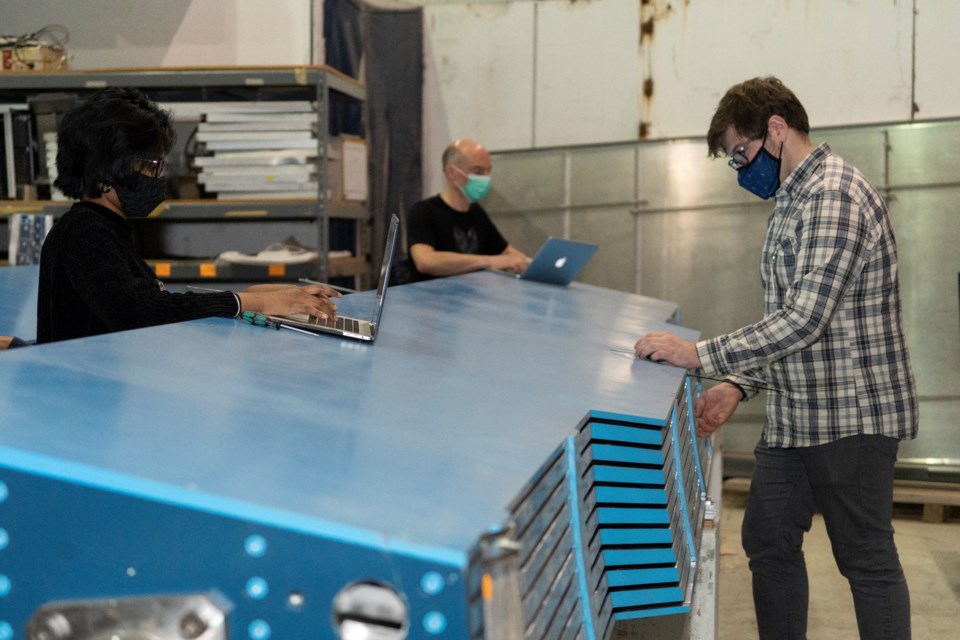By December of 2020, people had traded in their daily routines and hopes for new life experiences for an unforeseeable future of quarantining in their homes. While lockdown during COVID-19 was threatening the plans and dreams of so many, an invaluable opportunity was presented to four University of Colorado-Boulder PhD students studying physics.
According to Dennis Perepelitsa, an assistant professor in the Physics Department at the University of Colorado Boulder, sPHENIX is an “experimental collaboration” project that involves approximately 80 institutions from within the United States and around the world. Among the collaborators is Brookhaven National Laboratory in New York, where the project originated nearly 20 years ago and continues to operate. As such, the sPHENIX project is a labor of love for the scientists involved.
“We have had to design and build and test and integrate all of the pieces of sPHENIX ourselves,” Perepelitsa said.
Pioneering High Energy Nuclear Interaction Experiment, otherwise known as PHENIX, is the foundation experiment upon which sPHENIX is now a next evolution Perepelitsa said.
The experiment, in its entirety, involves putting fundamental particles into two separate circular rings, one set of particles flying one way and the other the opposite way, until the particles collide at different points around the ring.
“Our focus is that the temperature and the energy density in the collision zone can become so large that we actually end up studying a system which is very, very, very close to the phase of matter the universe was in just after the Big Bang,” Perepelitsa said.
Around the areas where the particle collisions occur, the sPHENIX team builds detectors to measure the collision’s production.
“We’re basically manufacturing a ‘little bang’ in the lab; a microscopic version of the same process that created the universe with the same conditions,.” Perepelitsa said. “We want to understand, at a fundamental level, what the universe is made of and how it works … pure knowledge for the sake of knowledge.”
When the pandemic hit however, there were worries about potential delays in getting the sPHENIX experiment up and running. The Brookhaven Lab was partially shut down and shipping delays across the globe added to the stress of getting the project started. The fear of such delays, as well as the knowledge that CU Boulder’s PhD students were taking classes remotely, gave Perepelitsa and his colleagues an idea.
“We figured, why don’t we send (PhD students) to help with the construction of this thing,” Perepelitsa said.
Jeff Ouellette is a fifth-year Ph.D. student studying physics at the University of Colorado Boulder. According to Ouellette, he knew he wanted to go into physics for a long time. “I remember hearing about black holes in high school and being like, ‘these are not just in someone’s imagination, they actually exist out there,’” he said.
Ouellette had run simulations on how systems such as sPHENIX could work prior to the opportunity to work on the actual project. In December, he was able to utilize his experience to work on several different layers and parts of the sPHENIX detector.
“With sPHENIX, one of the really special things about it is that I helped to build it. I got to own it in a sense,” Ouellette said, “which is not something you get to do in the field really often.”
Berenice Garcia, a third-year Ph.D. student studying physics at University of Colorado Boulder, spent her time analyzing data prior to her experience working on sPHENIX. When her supervisors from CU Boulder asked if she wanted to help with the sPHENIX project at Brookhaven Lab, Garcia immediately said yes.
Although she reported being a little wary of going to New York in the midst of the pandemic, Garcia said, “it's an awesome opportunity that I could just not miss out on.” Garcia and a friend packed their bags, threw them into Garcia’s car, and headed straight for New York.
Once at Brookhaven Lab, Garcia was guided on how to assemble and test a sector of sPHENIX.
“Assembling a sector was like following a cooking recipe. In our lab, all of the necessary ingredients, such as tiles, signal cables, amplifiers, optical fibers, etc, were provided and all we had to do was follow the necessary steps to put them together,” Garcia said, “After assembling a sector we had to test it. This was the fun and challenging part!”
It has been Garcia’s dream to earn her Ph.D. in Nuclear Physics for a long time. As she moved up higher into her education, however, Garcia reported noticing that she was oftentimes the only Latina in her physics classes. Feeling alone all the time, she became discouraged to study in the field and feared that she would eventually drop out.
“If someone would have told me back then that I would be doing Heavy-Ion Physics research in graduate school and helping out in assembling and testing the OHCal for the sPHENIX experiment … I would have probably laughed and said they were crazy,” Garcia said. “I am really glad that I did not give up my dreams and I hope to inspire other young Latinas to go into the sciences.”



